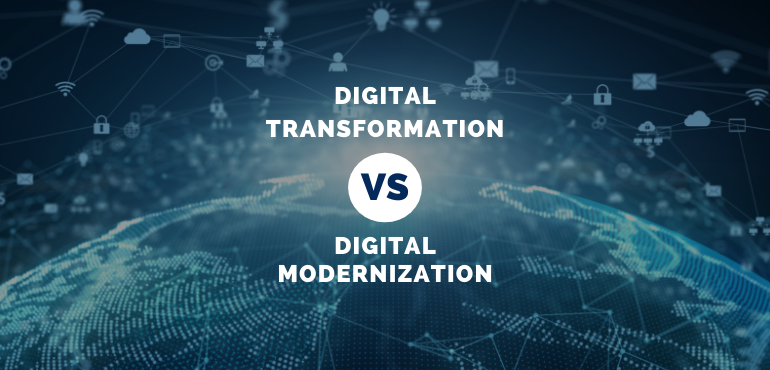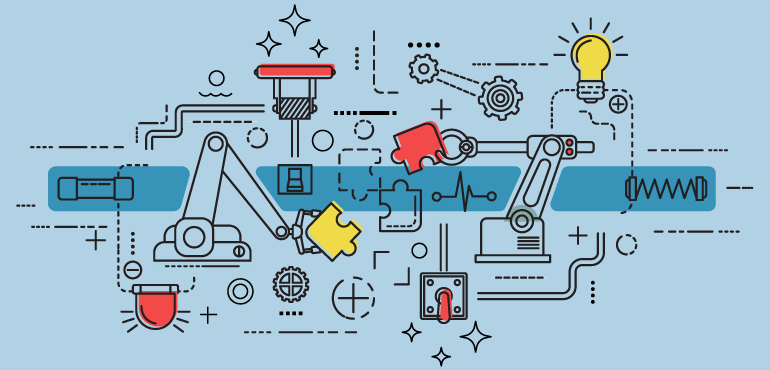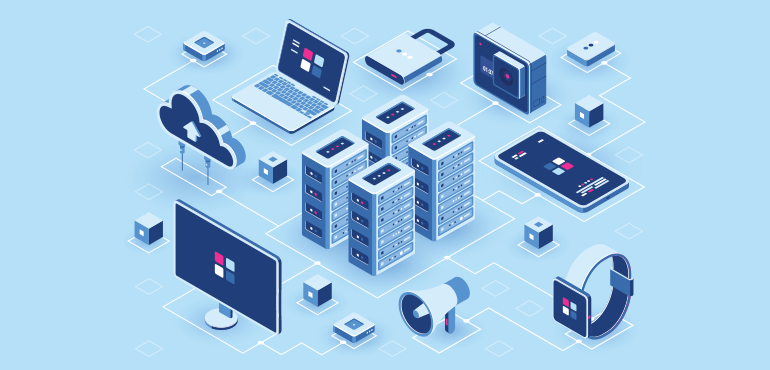
How Process Automation Accelerates Digital Transformation
Reading Time: 8 minutesWhat if you could share organizational data across departments and ensure that everyone has timely access to information; what if certain events in one department automatically triggered work streams in another? Well, you can. This can be done with process automation. An effective system to automate your business processes can increase efficiency and improve communication

Digital Transformation Vs Digital Modernization: Which is Better for you?
Reading Time: 11 minutesIn today’s world, digital is an immensely popular buzzword. The technological landscape is ever-changing, and companies must be ready to change. You might get confused while deciding between digital transformation vs digital modernization regarding which is appropriate for your requirements, so we’re here to clarify all of your doubts. What is Digital Transformation? Digital transformation

How can No-Code for BFSI transform the Industry in 2026
Reading Time: 9 minutesThe past few years have seen the rise of remote working and disrupted industries across. But, the Banking Financial Services and Insurance BFSI sector has taken a massive hit because of the pandemic. Moreover, customer expectations keep rising, and new technologies and heavy regulations are the tips of the iceberg for banks and insurance companies

The Ultimate Hyperautomation Revolution: Embrace the Future or Get Left Behind in 2026
Reading Time: 13 minutesBut what’s all the fuss about hyperautomation, and why has Gartner classified it as a top strategic technology trend? To answer these questions, we will have to dig deep, but let’s start from the basics – What is Hyperautomation? In simple words, it refers to continuous automation in business. When you keep integrating automation into

Top No-Code Communities to Unlock in 2026
Reading Time: 6 minutesNo-code development is no longer far-fetched. It’s the present and everywhere- buzzing and growing with its unbeatable features. No-code apps are booming and have transformed the industry with their ability to solve software hassles within minutes without any coding knowledge! No-code’s simplicity in mechanics such as drag-and-drop and choosing from the given options to build

Process Mining 101: Unveiling the Dynamic Secrets of Your Business Workflows
Reading Time: 8 minutesIf there are two phrases we are hearing much too often today, they are “digital transformation” and “automation.” Of course, this drastic change was overdue, but the pandemic catapulted it, eliminating any and all excuses for procrastination. If a business has to survive this uncertainty, it has to make digital transformation its key focus, the

15 Critical Questions CIOs Must Ask Low-Code/No-Code Vendors
Reading Time: 6 minutesWe want everything to go today – including enterprise-grade applications! So, what are the Questions CIOs must ask? But before that, let us talk about modern work style. Everything from work styles to the way we look at applications has changed drastically in the recent past. We now want everything to be integrated quickly so

Digital Process Automation – The Secret Weapon for Business Growth
Reading Time: 14 minutesThe tech world is full of new advancements and jargon. Often, it is hard to keep track of them. It is also very easy to confuse between two or more terms because they all seem alike. Digital Process Automation (DPA) has been a victim of this confusion. It is an important aspect of digital transformation

Quixy’s No-Code Recruitment Solution to Make Your Hiring Process a Breeze
Reading Time: 4 minutesAre you using emails and Excel to manage your recruitment activities? Are you looking for an efficient, transparent, and customizable recruitment solution? Look no further!! Quixy’s ready-to-use recruitment solution helps automate the end-to-end recruitment process from raising a requisition to the issuance of the offer letter. The solution can be customized based on individual organization

What does it mean to achieve the SOC 2 Type 2 Compliance Certification?
Reading Time: 4 minutesThe leading no-code app development platform, Quixy, recently achieved the System and Organization Controls 2, Type 2 (SOC 2 Type 2) Compliance Certification in addition to ISO 27001 certification that it already holds. As an advanced Business Process Management (BPM) and High-Performance Application Platform-as-a-Service (HpaPaaS) provider, Quixy’s top priority is security, with a strict no-compromise













